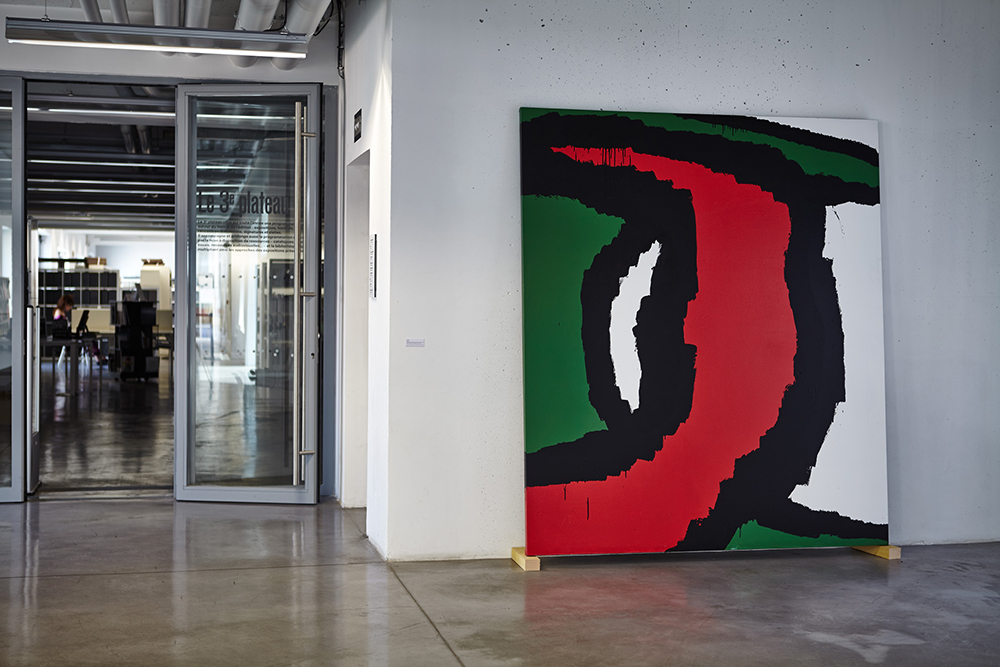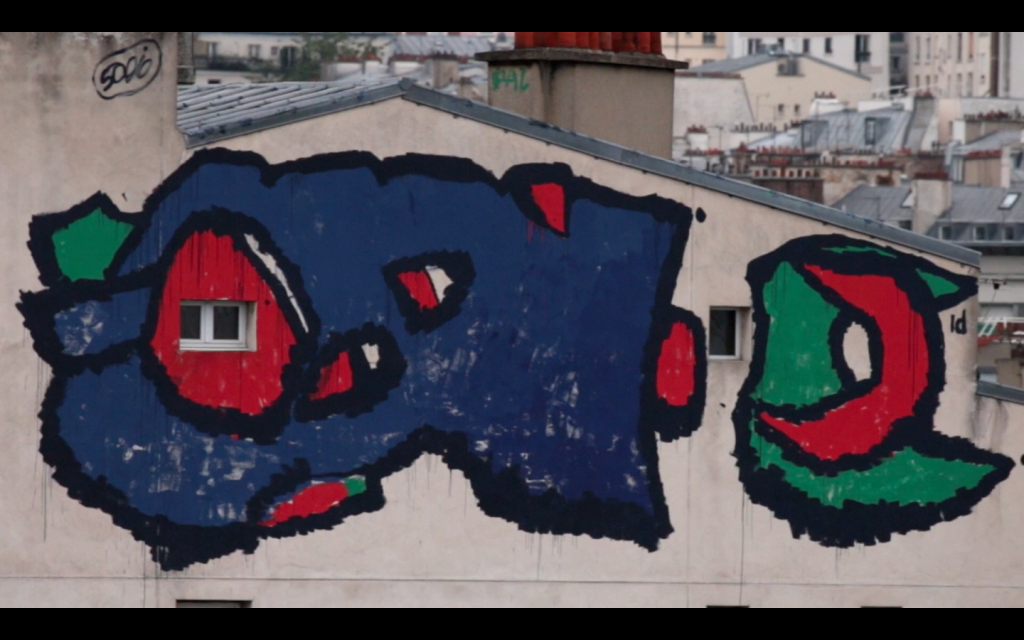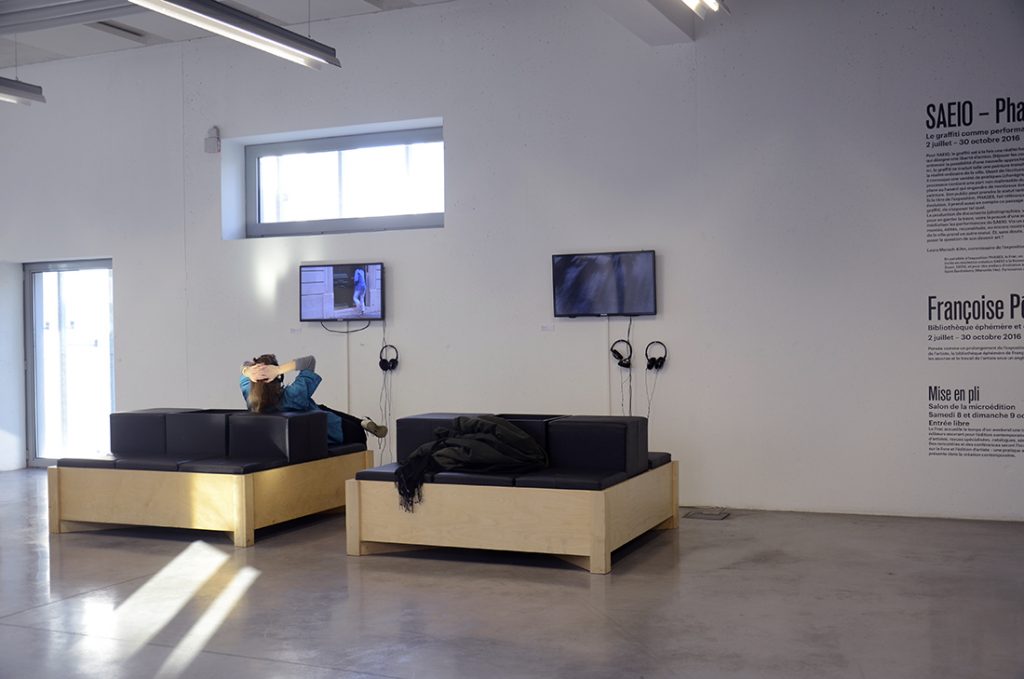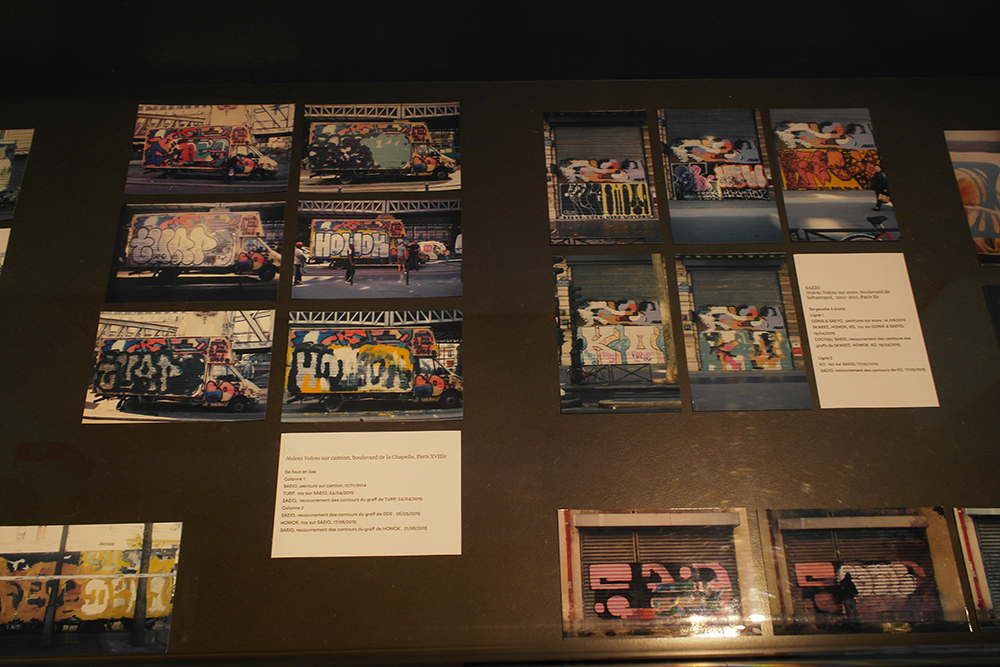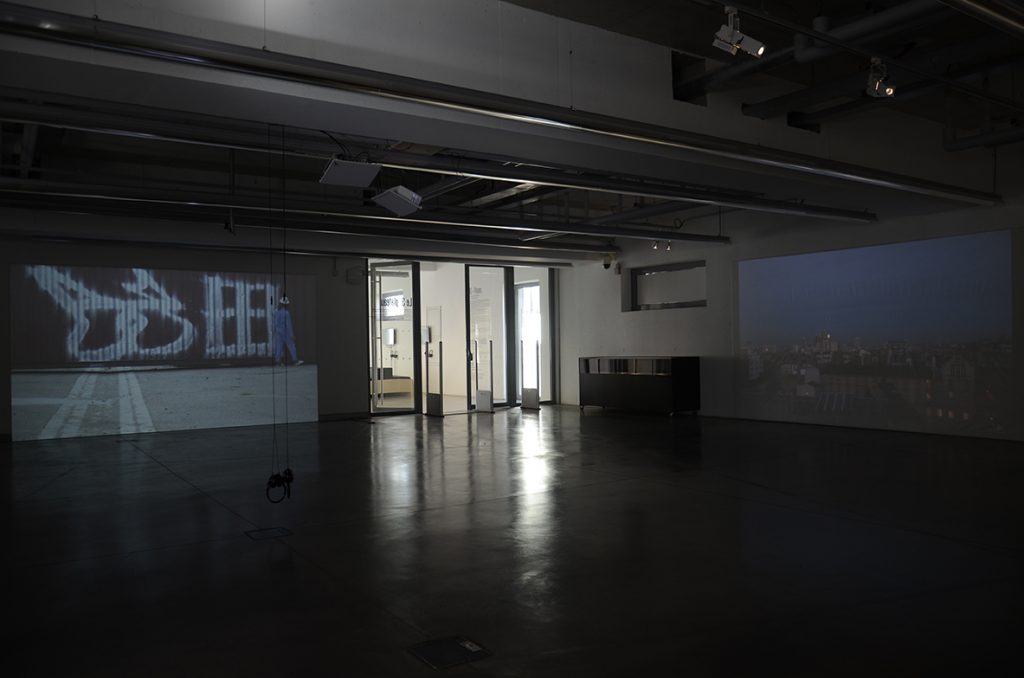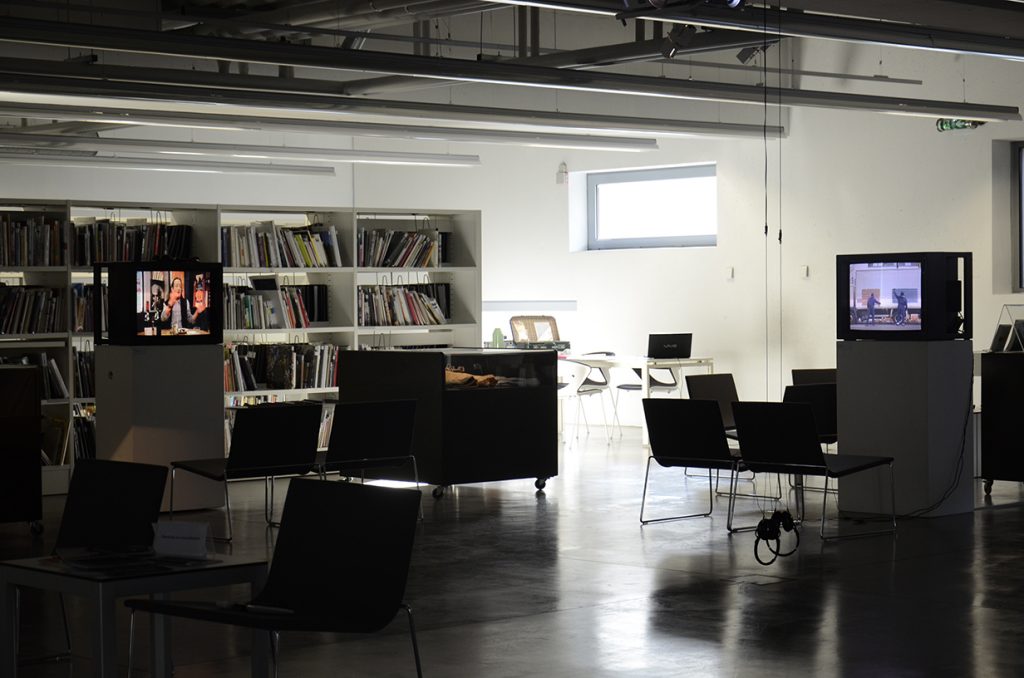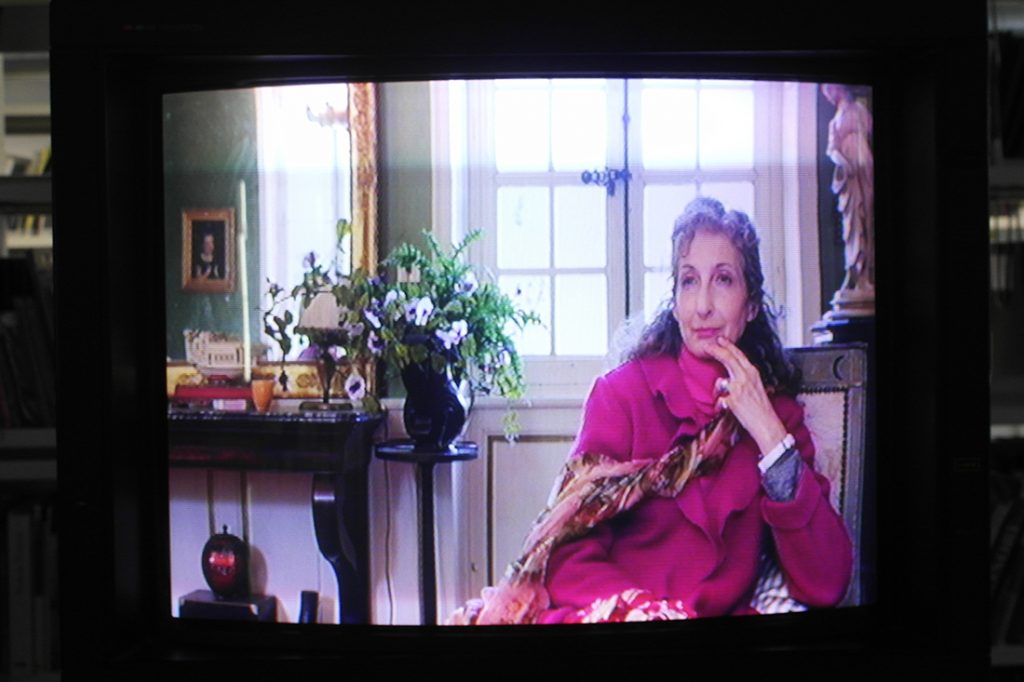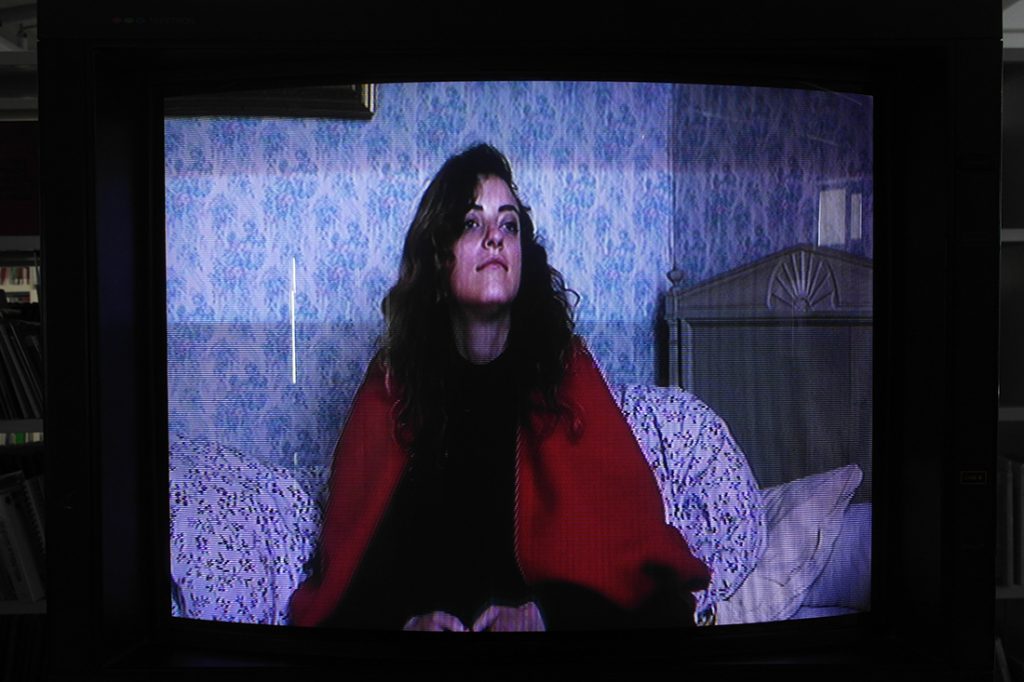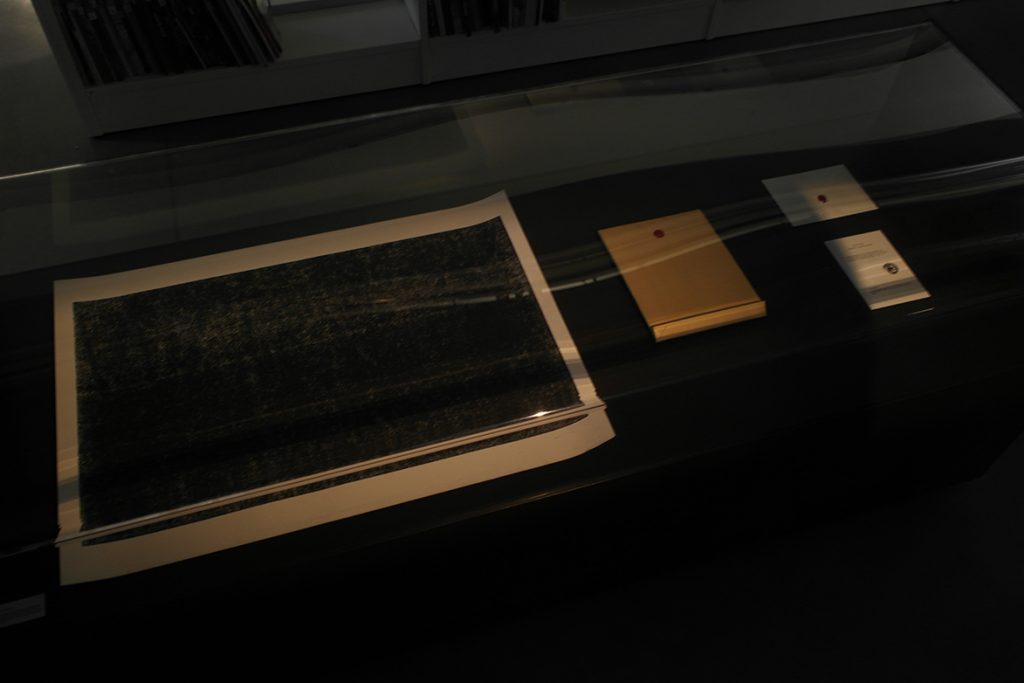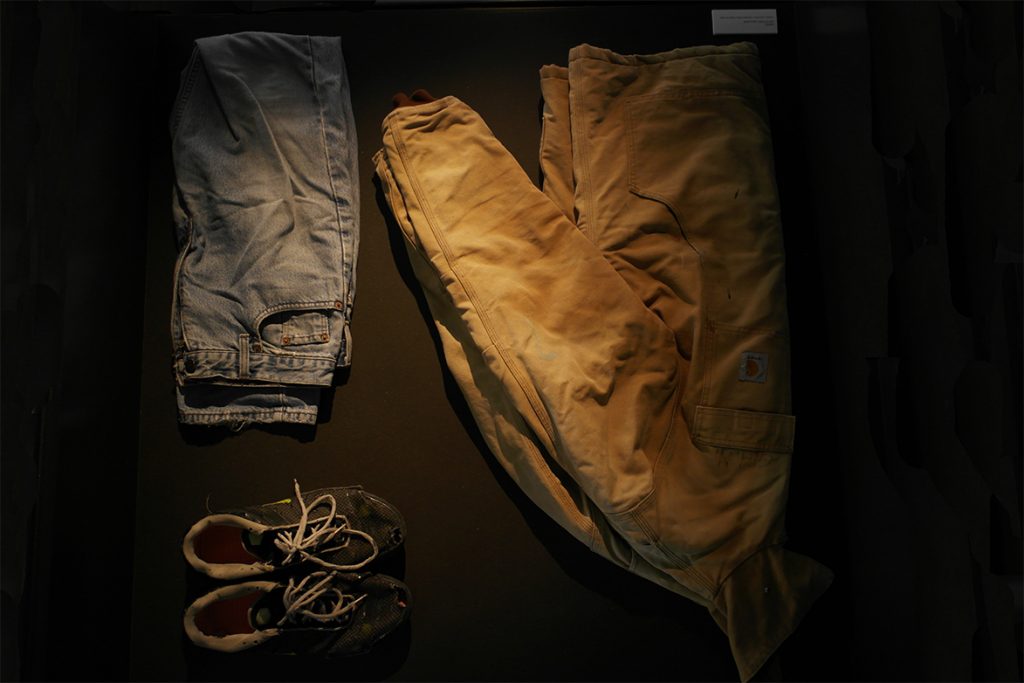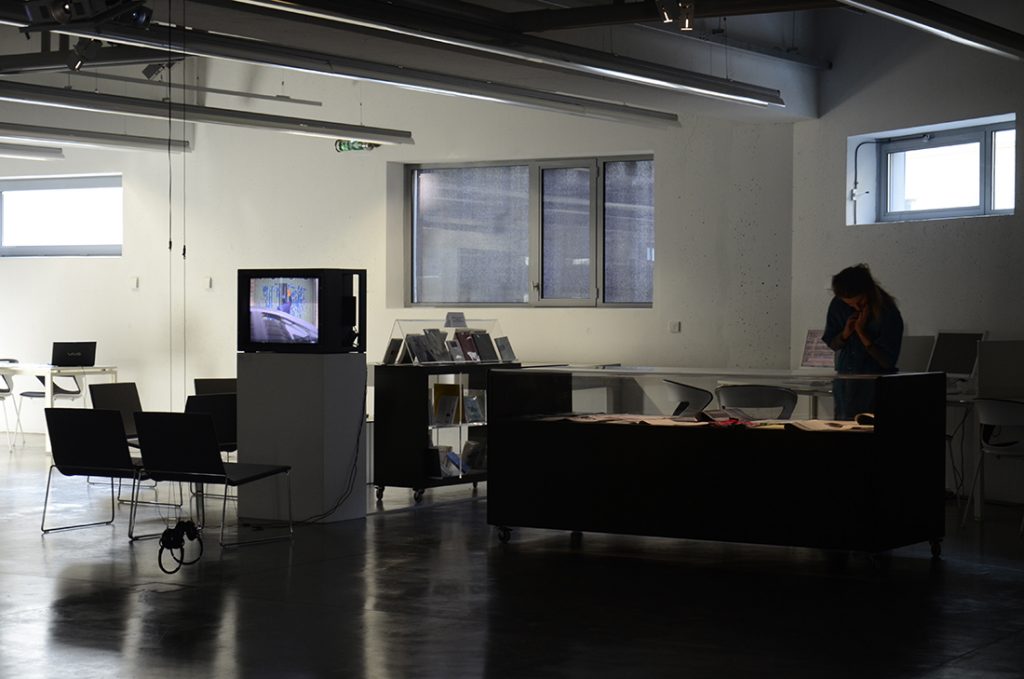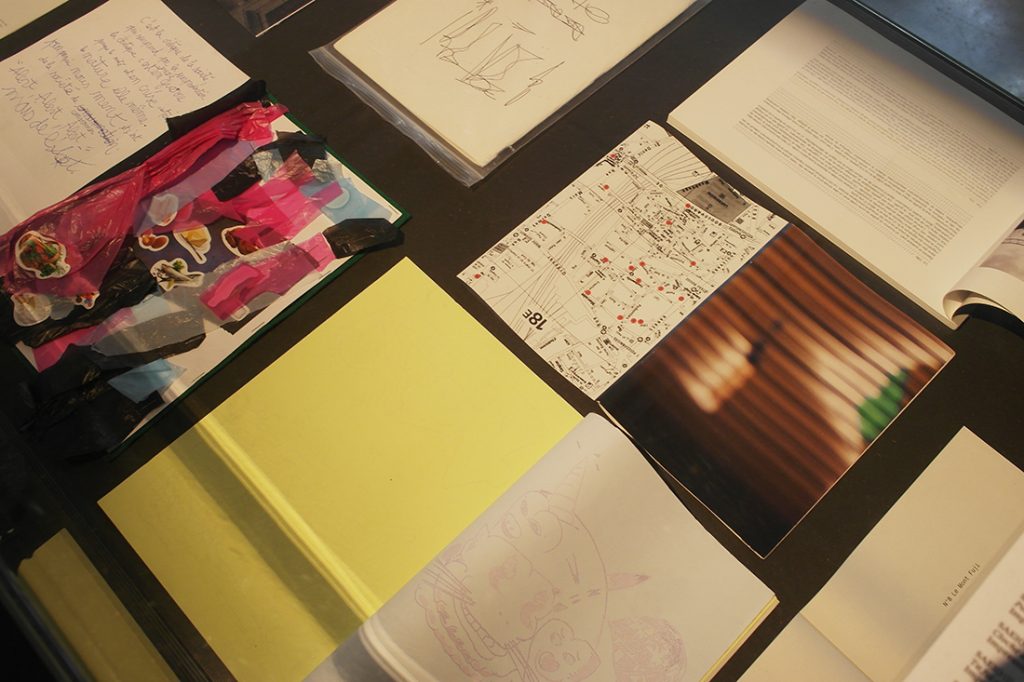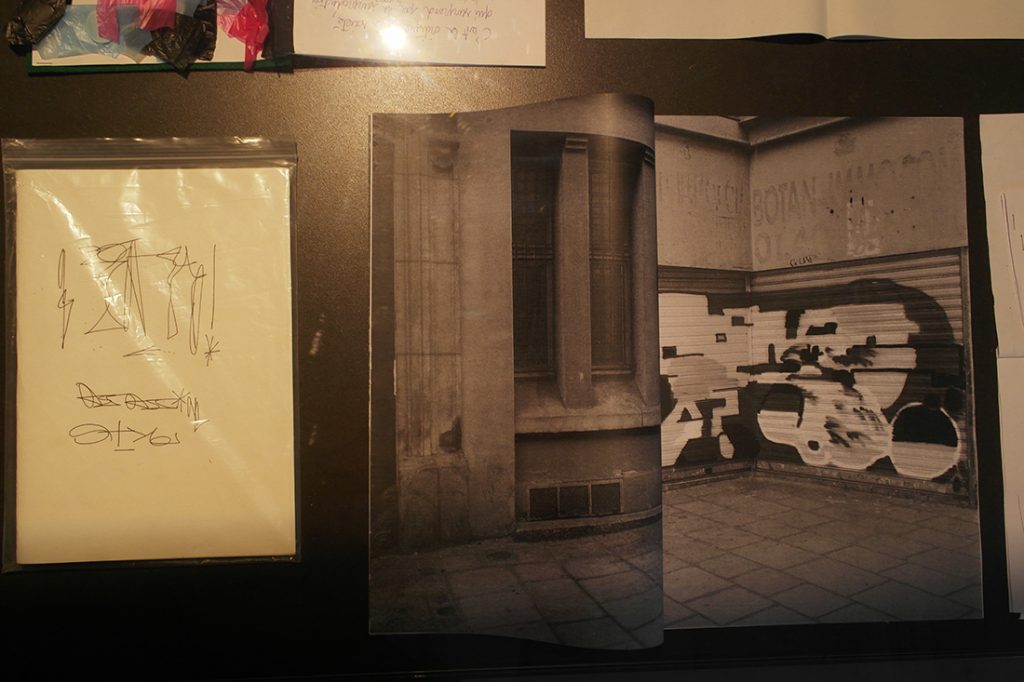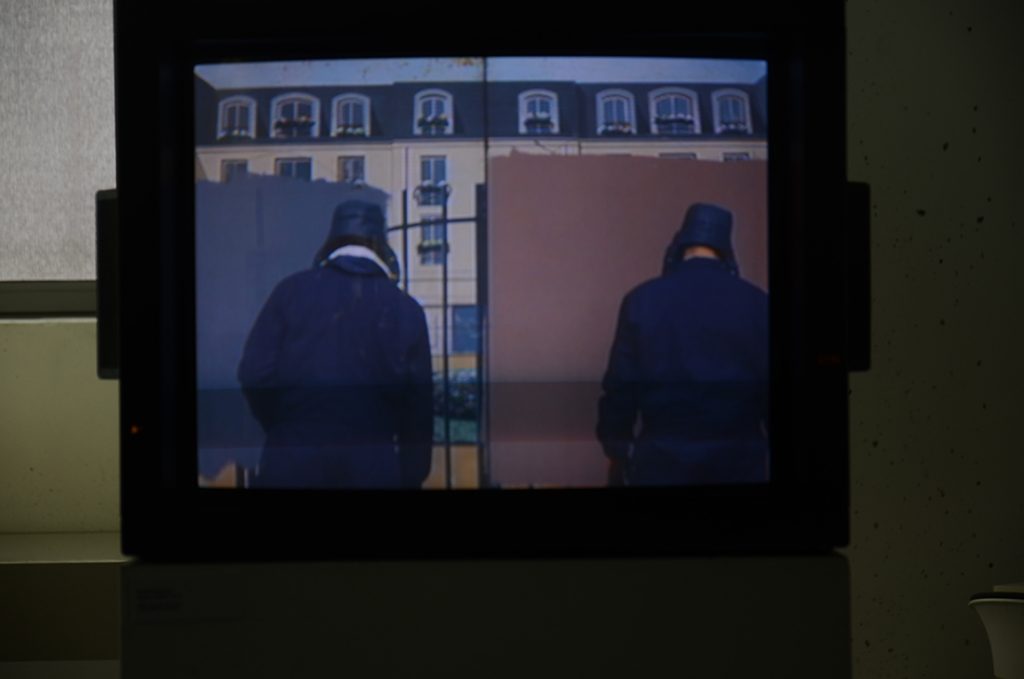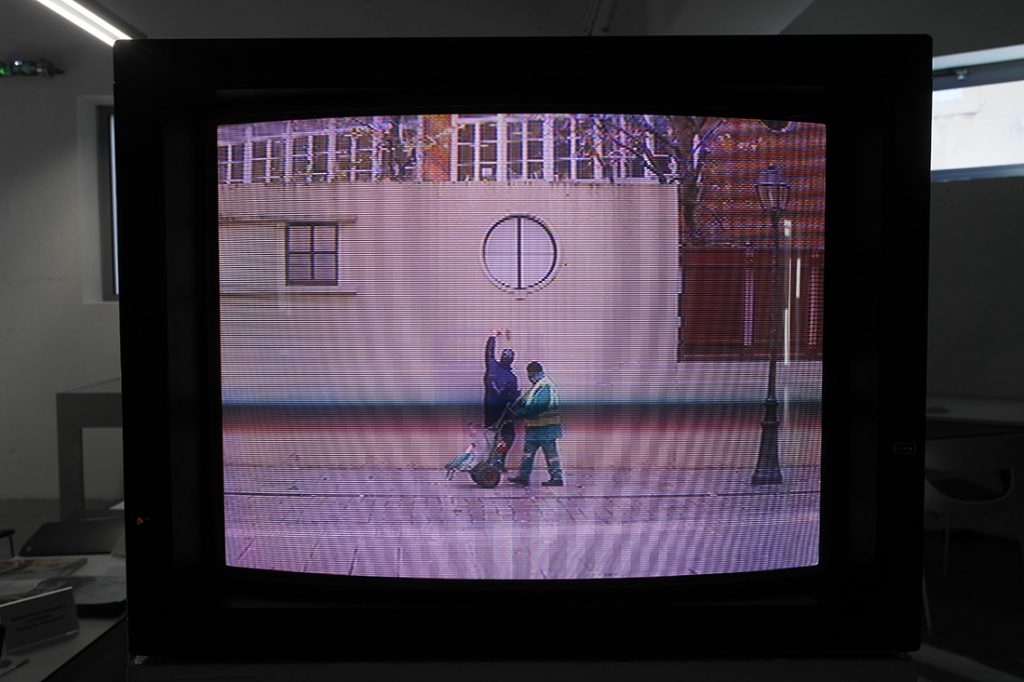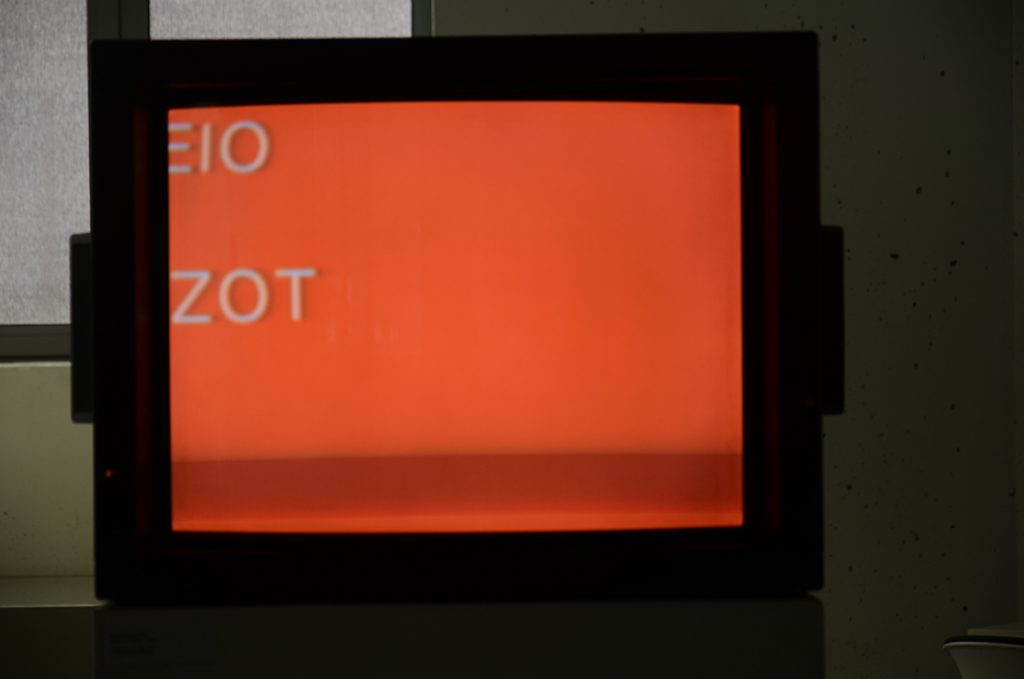Pour SAEIO, le graffiti est à la fois une réalité formelle et un engagement dans le monde qui désigne une liberté d’action. Déjouer les codes du graffiti pour en effacer les limites, qui est aussi entrevoir la possibilité d’une nouvelle approche de la peinture.
Ici le graffiti se traduit tel une peinture transitoire en acte, où le peintre agit sur et avec la réalité ordinaire de la ville. Usant de l’écriture, du corps, du temps et de l’espace in situ, il convoque une variété de pratiques (chorégraphie, marche, ethnographie, mode, …). Son processus, s’il est concerté, contient néanmoins une part non maîtrisable due, notamment, à son statut illégal, laissant place au hasard qui engendre de nombreux événements et interactions intégrés à la peinture. Son public, c’est la mul- titude qui peut prendre le statut tant de regardeurs que d’activateurs.
Le titre de l’exposition, PHASES, s’il fait référence à l’idée d’un ensemble d’actions, d’une évolution, prend aussi en compte ce passage par l’expo- sition et l’impossibilité, pour le graffiti, de s’exposer tel quel.
La production de documents (photographies, vidéos, sons …) inhérente à cette pratique pour garder la trace, voire la preuve d’une action semble être ici le support idéal pour médiatiser les performances de SAEIO. Via un ensemble de documents bruts, détournés, montés, édités ou encore reconstitués, montrés en toute légalité, le graffiti sorti de la réalité de la ville prend un autre statut. Et, sans doute, est-ce dans l’ici & maintenant que doit se poser la question de son devenir art ?
Laura Morsch-Kihn, commissaire de l’exposition
http://www.fracpaca.org/dans-les-murs-expositions-a-venir_saeio-phases
https://lenouvelespritduvandalisme.com/
